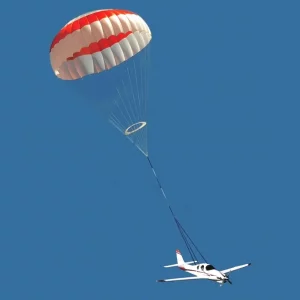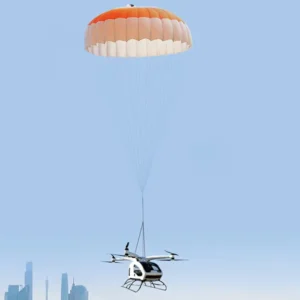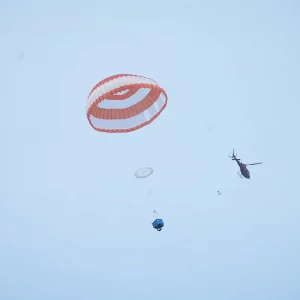
The T-10 extended skirt parachute was officially adopted by the U.S. Government as a standard troop parachute in the early 1950s. Since then, it has remained in consistent use with only minor updates over the decades, proving its reliability in personnel deployments.
T-10 Series Specifications
Canopy Shape: Parabolic
Nominal Diameter: 35 feet (10.7 meters)
Inflated Diameter: 25.7 feet (7.8 meters)
Canopy Fabric: 1.1 oz. ripstop nylon, PIA-C-7020 Type I
Vent Line: Type II nylon cord with 400 lb (181.8 kg) tensile strength (PIA-C-5040)
Suspension Lines: 30 total, made of Type II nylon cord, also rated at 400 lb (181.8 kg) tensile strength
Suspension Line Length: 25 feet 6 inches (7.8 meters), from connector link to lower lateral band
Maximum Payload Capacity: 360 lbs (163 kg)
Total System Weight: 31 lbs (14 kg)
Steerable: No
Maximum Operational Wind Speed: 15 mph (6.7 m/s)
Average Descent Rate: 22 feet per second (6.7 m/s)
Minimum Deployment Altitude: 500 feet (152 meters)
Maximum Deployment Speed: 173 mph (150 knots)
Shelf Life: 16.5 years
Service Life: 12 years

The T181 Aircraft Parachute Recovery System (APRS) utilizes a Mechanical Activation Rocket to provide essential safety for fixed-wing aircraft in emergency situations. When an aircraft faces significant malfunctions or loss of control, the system slows the descent, helping to stabilize the flight and ensuring a controlled and safe landing.

The T193 Emergency Recovery Parachute System is tailored to fulfill the safety needs of eVTOLs, low-altitude multirotors, and similar aerial vehicles. This state-of-the-art system employs a gas-ejection mechanism for parachute deployment, providing rapid and dependable activation in critical situations. It offers multiple activation modes, including manual operation, flight control system-triggered deployment, and autonomous activation for enhanced operational flexibility.


Contact Us
Copyright © 2021. All rights reserved. Cookie Policy | Privacy Policy
WhatsApp us